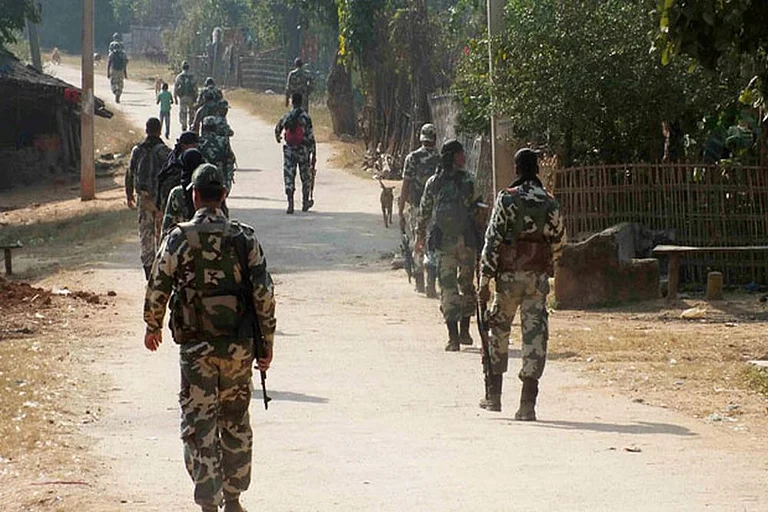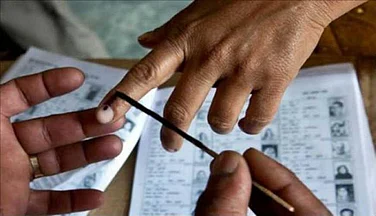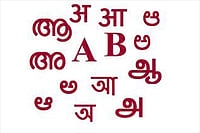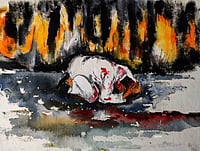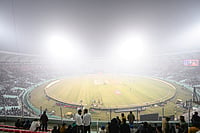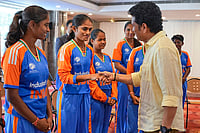The Caribbean and India. Two places on opposite sides of the planet. Columbus mistook one for the other, yet that’s not the only reason why we take them as key sites from which to uncover a silence in history: on gender. That is, to try and produce a gendered history via race and migration. An interesting cross-connection between the two locales is forged here between the interlocutors. Nalini Natarajan, professor, author and cultural critic, has Tamil as her mother tongue, was raised in Delhi, taught at Miranda House, got her PhD in Scotland, but now lives and teaches in Puerto Rico half the year. Peggy Mohan, writer, linguist, and music teacher at a school in Delhi, was born and raised in Trinidad, West Indies, did a PhD on Caribbean Bhojpuri, and made a reverse journey to one part of her roots. Nalini and Peggy first met when they shared an office as teachers at Jawaharlal Nehru University, back in 1980. Filtering their unique perspectives, both have mined themes revolving around migration, diasporas and gender in their books: Peggy with Jahajin (2008) and her upcoming book Wanderers, Merchants, Kings: The Story of India Through Its Languages; Nalini with The Unsafe Sex (2016) and Atlantic Gandhi (2012). Here, they try to link up their overlapping concerns in a free-ranging conversation with Sunil Menon that itself migrates back and forth:
Nalini Natarajan: This is a spontaneous chat on the overlaps and divergences in our work, and the ideas they spawn.... Could one think of ‘gender as a race’? I have always been surprised at the visceral cruelty women have faced in patriarchy. Women are daughters, sisters and wives, yet there is a violent otherness to how they are seen. They are considered polluted, left out of inheritance, objectified. By ‘race’ I do not mean here something biological, but a constructed thing. Men and women carry the genes of both parents. ‘Women as a race’ is a socio-political construction.
Peggy Mohan: Gender and race...my perspective on this comes from my work on migration and how it shapes languages.
Nalini: Could we say discrimination against women, in the first instance, draws from the racism of settler cultures? In the subcontinent, the First People came into contact with subsequent settlers who became the Harappans, and later with people from the Steppes, men who likely came without many women and who interbred with local women. These women would have spoken a different language, would have been treated as inferior...the conquering culture would prevail as the language of the father, religion, or of the ‘race’. So the Indus Valley people got absorbed into the Vedic culture. Similarly, in Puerto Rico.... And women continued to be treated as a subjugated people, a different ‘race.’ Knowledge of Sanskrit, for instance, was denied to women. And skin colour, the initial marker of difference whenever cold weather people conquer warm weather people, became more pronounced in discrimination against women. Hence the obsession with ‘pale’ brides even today.
Gender is like race. This explains the virulent misogyny, which has always perplexed me as it even exists within families, and the tyranny of appearance affects women more. In India, skin colour is used to objectify women as possessions. Racism is linked to objectification. I saw comparable processes in Puerto Rico. In the Caribbean, there is a word, ‘blanqueamiento’, which means whitening, which tells men to marry lighter-skinned women. Thus indigenous people or Africans must blend into the Spanish fold. But the bearers of older culture—food, belief systems, ways of life—are always women.
Peggy: I have often felt that since the earliest times, men and women, especially in the northwest of India, were almost two separate ethnic groups. The early injunction against women speaking Sanskrit has persisted. In many families this metamorphosed into Hindu and Sikh gentlemen being educated, in Mughal and British times, in Persian, and literate only in the Persian script, while their women learnt Hindi or Gurmukhi, were vegetarian and sang bhajans or gurbani rather than thumris and ghazals. In elite Muslim families in UP, the men knew Urdu while the womenfolk spoke Awadhi, the local dialect. But the earlier women’s languages shaped the languages we have today. It is almost as though Sanskrit, Prakrit and Persian put a coat of paint onto something much older—maybe a glimpse here of the language of the Harappans? Look at the modern languages...Urdu, Malayalam etc. Only nouns got added, from Persian or Sanskrit. The inner structure was something much older.
Nalini: So, the separation of genders, almost as if they were a race, reinforced by language separation! This helps give us a context. In south India too, Brahmin women could not learn Sanskrit or recite the Gayatri hymn. Tamil was more the province of women, Sanskrit for the men. Men got formal education in Tamil or Sanskrit, and later English, so they spoke and wrote literary Tamil too. Another thought. Literary Tamil (Chentamizh) is not like colloquial Tamil (which have been said to have Australasian sounds). I wonder if that is our earliest linguistic ‘coat’! How did Chentamizh appear over colloquial Tamil, and Sanskritised Tamil over that?
Peggy: I’m piqued by the thought of spoken Tamil sounding like Australasian! I know some Australasian languages have the retroflexes ट ठ ड ढ ण, ṭ ṭh ḍ ḍh ṇ and the retroflex ळ, ḷ, that exists in Marathi, Gujarati, Rajasthani dialects and all the Dravidian languages. You even get a whiff of retroflexes like ट ठ and ड (ṭ ṭh ḍ) in the Andaman languages and most of the Munda languages. Retroflex sounds jumped early into Sanskrit, which, according to Madhav Deshpande, did not originally have them. This is where I started my journey, in my forthcoming book, to find the female (and earlier) substratum of our population and languages. These retroflex sounds are almost like a marker of an Early Indian.
Nalini: In Puerto Rico, in the Spanish they use, certain ur-words like hamaca (hammock) and huracán (hurricane) are from the earlier, Native American Taino-Arawak cultures. Many Taino-Arawak place-names and names of caciques (chiefs) remain too. And women are ‘curanderos’, medicine women, who know the lore connected to plants. Men, on the other hand, are more genetically Hispanicised. Their Y-DNA, following the paternal descent line, is more European, and the women’s DNA more Taino. The widespread myth is that the Tainos were killed off but their women remained....
Sunil Menon: So the idea of ‘women as a separate race’ gains some biological depth too? It’s not just socio-political markers of discrimination, there’s a genetic layering....
Peggy: Indeed, there is a layering. And in India, the women, in a way, form the innermost layer.
Nalini: How I mean it is, I don’t think women are biologically a different race, they do not look different from the men anywhere in India, they always look like their group...it’s something more than that.
Peggy: It’s more complex, this layering. Indian women’s mitochondrial DNA (mtDNA), passed on from mother to daughter, goes unbroken all the way back to women who reached South Asia about 65,000 years ago! Almost all Indians carry this M genetic marker, of the first human migration out of Africa. The men who came later and set up the Harappan civilisation interbred with these First Women. And the R marker, found in many Indian men’s Y-DNA, goes back to the Vedic migration. So in that sense, these men are the carriers of evidence of a much more recent migration, about 3,500 years back. Yes, the genders share the genes...so they look like the same people. But the peopling of the subcontinent is itself layered in gender terms.
This can be mirrored on a more micro, regional scale too. Most migrants who were not hunter-gatherers tended to be male explorers all over the world. So it is likely that early Brahmin migrants even to the south of India were mostly male, that they married local women, and regarded the earliest female offspring as Brahmin for marriage purposes, while still holding them at arms’ length as racially different. In Brazil and the Caribbean too, the first ‘White’ families had some early Native American or African female antecedents; this was ‘allowed’ because it was necessary. Sunil, what is the story of the earliest Nambudiri Brahmins? Were there a few women in the group? Or were they all male (like the Ahoms in Assam)? With the very first children being born of local mothers, and the first girls being accepted as Brahmins?
SM: There isn’t a lot of evidence to back this, but a huge mixed-gender migration was perhaps unlikely. I guess only a mitochondrial study could test this. Miscegenation of course goes back to some of the founding myths...to the Brahmin Vararuchi and his Paraya wife, for instance. At the same time, there was an extremely high premium on strict sexual mores for Brahmin women, only the women, mind you...the highest sin being the pratiloma marriage, which was the norm for the younger males; or the very cruel punishment for sexual transgressions, as in the smartha vicharam phenomenon. Nambudiri women are literally titled ‘Antharjanam’ (the inside people)...this near-Talibanesque stress on purdah and sexual purity for the women suggests a degree of protectiveness around the idea of ethnic purity. So perhaps some women....
Nalini: I think all migrants brought some women, but not enough. Brahmins often came to Tamil lands lured by the offer of temple priestship and land grants. Among Tamil Brahmins, strangely, ‘purity’ is linked to later arrival, though status and orthodoxy is not. Of course, mestizaje—mixing—occurs everywhere, so these illusions of purity are just that, delusionary narratives and myths of origin. Only DNA studies can really tell us about real origins. But these delusions lead to present-day cruelty and bigotry, so they must be unpacked.

Peggy: On the Nambudiri Brahmins, it’s clear that they did not preserve their original spoken language. It had to have been a post-Prakrit language, a Middle Indo-Aryan dialect from circa 8th century—say, something on the verge of becoming Marathi! Or any other modern north Indian language, full of not just tadbhava words and but absorbed phenomena like verbs having gender, which is not there either in Sanskrit or early Prakrits but is there in Hindi and the rest. The time of their entry into Kerala—in response to Nair kings who wanted them to validate their royal status via the śrauta rituals—can be gauged via some markers. Nambudiris were some of the very few Brahmins who preserved the Śākalyasamhitā of the Rig Veda. But it was common for migrants to ditch their actual, spoken mother tongue for a new, mutable one, while holding onto their ‘high’ language, the language of elite men. Almost the way they moved on from their earlier womenfolk to women in their new lands. Women as vernacular...in all senses! Pardesi Jews in Kerala lost Ladino, but held onto Hebrew. The Central Asians who came to India lost Chagatai/Uzbek but held onto Persian, their high language. This makes me wonder if the Vedic men, too, didn’t come with a spoken language which quickly segued into local Prakrits, absorbing Dravidian/Munda sounds... while Sanskrit was kept pure and pristine and without these sounds for a few centuries. Kept pure the way Hebrew and Persian were: though, since the tradition was oral, there was ‘leakage’ from local languages as the Vedic hymns were preserved orally for centuries, until the time of the samhitās. Sanskrit clearly picked up retroflex sounds; Persian, which was always written, never did!
Nalini: With Tamil Brahmins, you see this clear gap between the pristine/prestigious and the local, affecting all levels, till today. Women often wrote in Tamil; while men wrote in English after the British came. (I have all my grandparents’ letters. My grandmother was a lot more attached to Tamil, refusing to use English though she understood it!) So English became the new elite language while Sanskrit was now relegated to the language of prayers, recited by women in bhajans, shlokas and kritis. So you have an English-Sanskrit-Tamil gendered apportioning and division.
Peggy: Across the Ghats, I think Malayalam got its Sanskrit—almost entirely nouns—direct from the high register of the Nambudiris, who had preserved Vedic Sanskrit for their recitation and now deployed it in secular literature. That was absorbed with Dravidian sandhis and other phenomena—purohitam becoming purohidam, and न between vowels becoming ण. I once heard a 90-year-old Nair woman reciting the Rigvedic Agnisuktam and it could have been Kālidāsa’s Shakuntala speaking what we are told was ‘Prakrit’! Modern north Indian languages, born around the same time, say one millennium ago, on the other hand, adopted Prakrit words and markers, with their tadbhava sounds. The ‘pure Sanskrit’ words in north Indian languages came much later.
SM: A lot of tadbhava words in Malayalam actually came via Prakrit, and are often shared with Tamil. So we have this curious coexistence—a tripartite agreement, almost—of three words for the same thing. A desified version of the Indo-Aryan word (of Prakrit origin) and the ‘pure’ tatsama, plus of course the native Dravidian word.
Peggy: Early Sangam literature has many Prakrit tadbhavas, they filtered into the south long before the Sanskrit words came.
SM: A sign perhaps of spoken language retention at the early stages of migration.... Let’s take these layered patterns half-way across the planet, do they sustain?
Nalini: Yes, absolutely. One is struck by the near-identicality of the link between women and the ‘vernaculars’—using that word advisedly. Look at the recent settler societies in the Americas. Puerto Rican Spanish, as I mentioned, is known to have been influenced by Taino, the earlier Native American language, though very little survives of the Taino people. Mestizaje—mixing—occurred in the early days, as DNA tests have shown. Just as, very roughly, just as linguists might say Prakrit is a proto-Sanskrit mutated with Dravidian and Munda elements, I have heard it said that working-class Puerto Rican Spanish might still be called Spanish with a Taino accent! I can see where that comes from...it is marked by a consistent ‘swallowing’ of sounds. Could this not be about women and a lost language?
Peggy: That swallowing of ‘s’and other consonants is very Caribbean. You find it everywhere around the Caribbean basin. Cuba. Santo Domingo. Venezuela. Coastal Colombia. From what I know about Taino-Arawak, they did ‘swallow’, or rather whisper, the vowels at the end of their words.

Nalini: I mean the Taino—often considered vanished—might have survived in the local phonetics…. The link between ‘vernacular’ and women is the thread I am following here, and your linguistic information totally supports it: that the woman is like a racial ‘other’. But it’s complicated, as men marry women and coopt them, the way the babu class or the Uncle Toms were coopted. In fact, women and babus could be seen to have ingratiated themselves the same way! Another question: are settler cultures worse that cultures that were never invaded? What of those who were always invaders and never invaded? Were ‘their’ women more equal? What does the language show?
Peggy: Think of Thailand. Or Afghanistan. Afghanistan has been invaded many times, but not conclusively conquered. I can’t think of a single answer. Except that societies that have constantly been at war may be more ‘muscular’, and men constantly being put down seem to require an ‘other’—women—who are worse off, who salvage their self-esteem. Many have wondered how India’s poor have not revolted as men in other places under such stress are likely to do. My response: the caste system and early marriage. These men are not single men, by and large, and there is always someone less well-off close by.
I’ve been re-reading Jared Diamond’s Guns, Germs and Steel. Yes: overrunning a settled place means finding locals who need to be sidelined. One way of doing this is killing them off and taking their women. But what if they are capable of growing food surpluses? Food stocks are the base of a kingdom or empire—typically marked by a large population, scope for specialisation, people relieved of manual work. So some men are allowed to live but ‘deprived of political autonomy’. The caste system did that all too efficiently, as we know. I keep thinking that very soon all those earlier peoples—the Andaman Islanders are a good example—will become valued as remnants of a world we tried to get rid of, as we got rid of so many things, like plants and large animals, that weren’t ‘of use’ to us.
Nalini: Returning to the race analogy, it is of course not borne out by physiognomy: anywhere in India, men and women look like their group. And yet, you see certain patterns of behaviour. There is, for instance, the preferential treatment given to certain kinds of looks, especially among women. Skin colour, which reflects some racial bias. Why are women valued more by appearance than men are? Why are they put on the assembly line to be assessed?
Peggy: Well, it’s not surprising that women and men look alike: they are, after all, halves of the same two parents! The same basic ingredients.
Nalini: Yes, but rich men want “tall, fair” brides, like the blonde trophy wives in the West; what is that but a kind of racism?
Peggy: Men and women seeing themselves as two different ethnic groups is such a common thing. Black Caribs, after almost 1,000 years, see their men and women as being from different tribes! In 1200 AD, Carib men got to the island of St Vincent, killed all the Arawak men and took the women. To this day, even with Africans joining the group, making them Black Caribs, the men are Carib and women Arawak! There are Carib words that women are not allowed to use!
Nalini: Yes the ‘gender as tribe’ element is crystal-clear with the Caribs, but it isn’t so clear with others. Feminism has spoken of rights, and biological essentialism, but not of ethnicity. Hence this conversation. Older matriarchal societies might have been evidence of an autonomous women’s culture, but this is subsumed now in patriarchy where women become the culture-bearers at home. However, genetics, language, and ways of life suggest an ‘ethnic’ difference between genders.
SM: There do seem to be objective markers here. But more than anything baldly literal, I think this gives us a provocative and powerful analytical tool—a lens, or prism—through which to analyse power asymmetries by seeing one in terms of the other. Race, caste, gender…these are so often seen as separate categories of oppression. Even with intersectional readings, each lives individually as a salient form and merely overlaps with the other. Here, we see them potentially melding into each other. ‘Women as a race’, as a fused category, a political sandhi, so to speak, produces genuine novelty, gives us a new vocabulary!
ALSO READ
A shorter, edited version of this appeared in print








